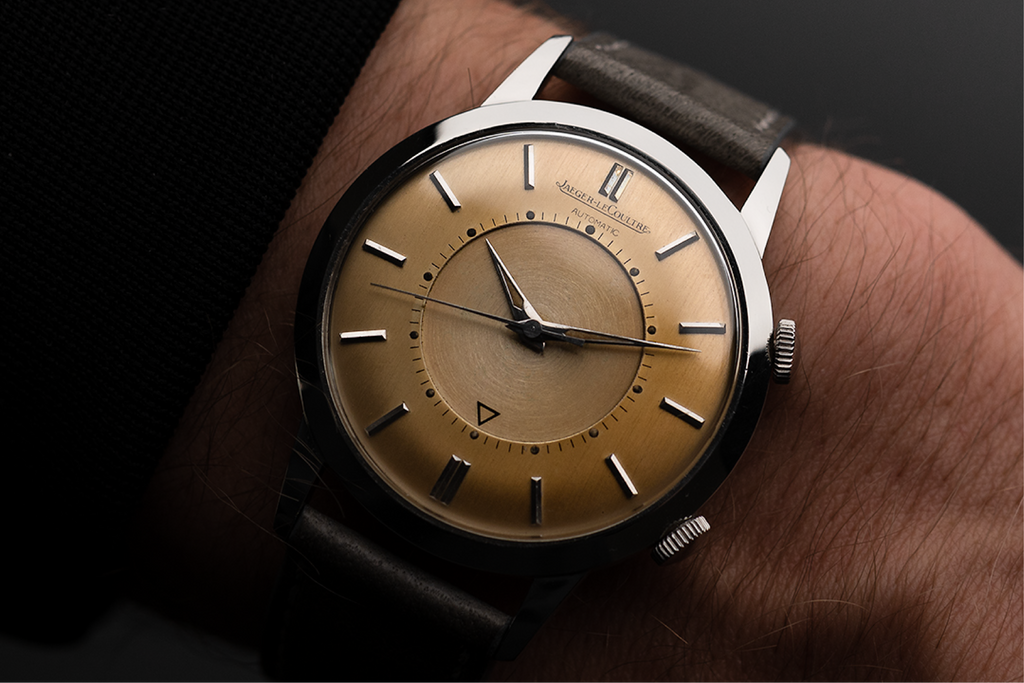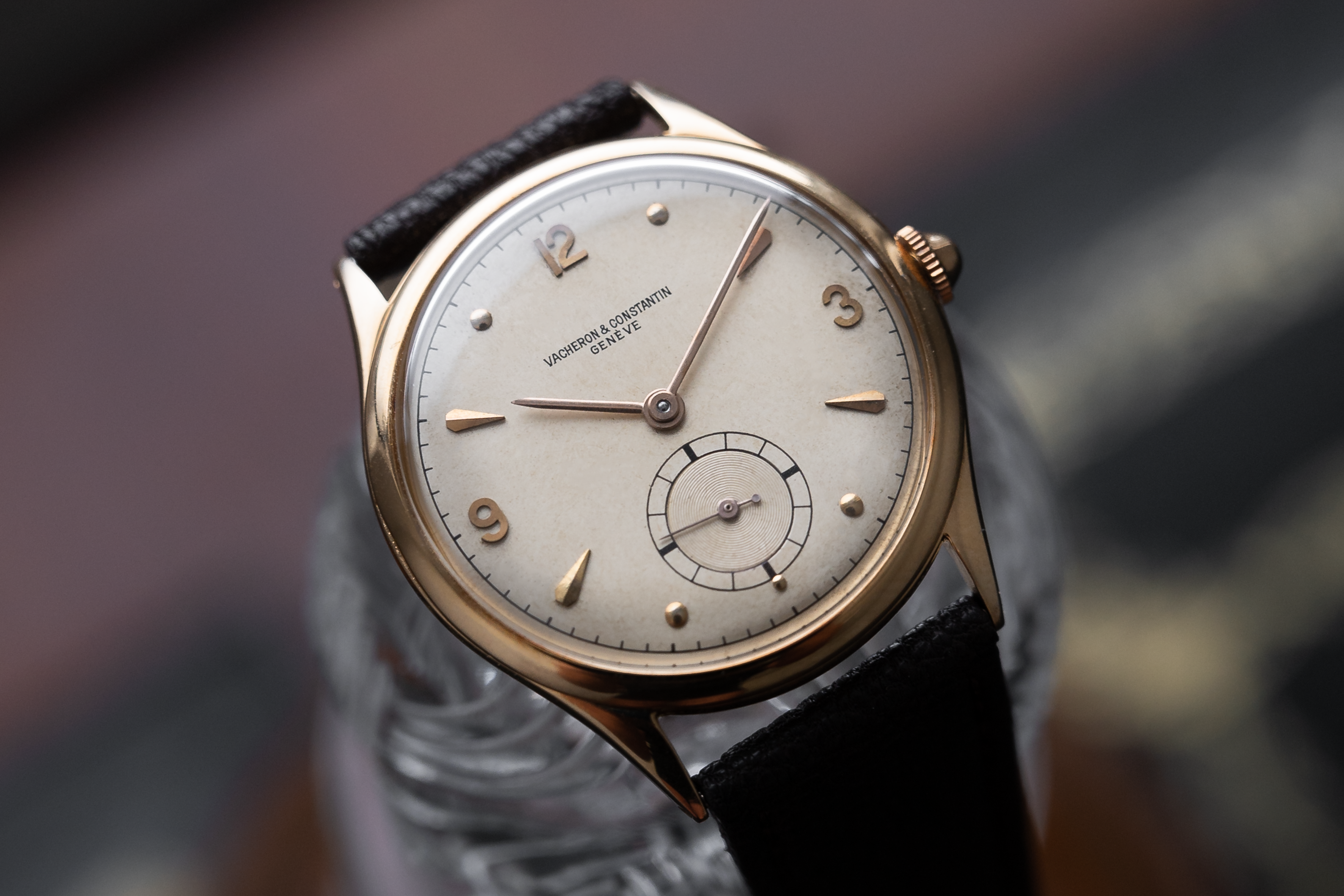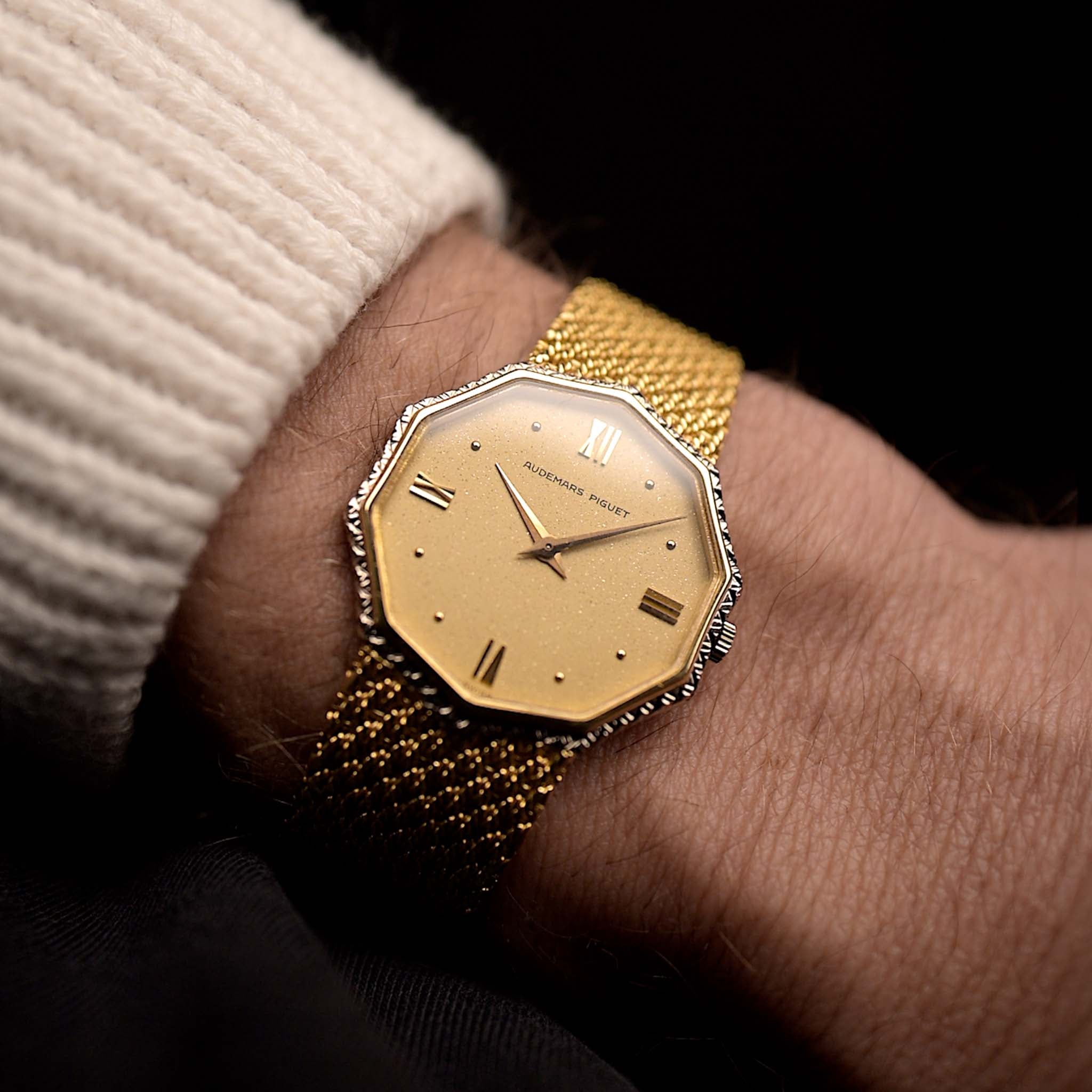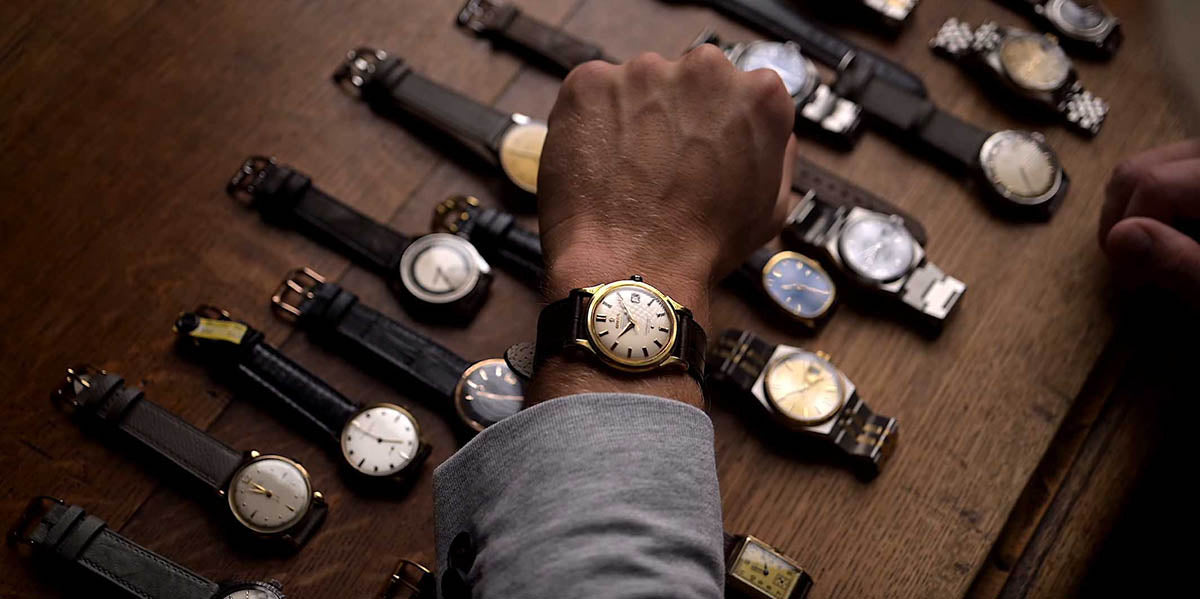One often overlooked detail on every watch are the hour markers. When someones asked to name what type of hour marker their watch features most have to look down onto their timepiece to answer this question. This seems surprising as it is the reference frame needed to actually being able to tell the time. The figurative forest on the edge of your dial. However, this key design element is not just functional but highly fashionable as well. We might not always think about it this way but the hour marker set the stage for the dials appearance. And as such an important style element this feature has developed over time, leading to a cornucopia of distinct looks. The open question is, does the zeitgeist dictate this look?
January 11, 2022
The Ultimate Watch Hour Marker Guide
 Marcus Siems @siemswatches
Marcus Siems @siemswatches
Collector, Author, Data Analyst
One often overlooked detail on every watch are the hour markers. When someones asked to name what type of hour marker their watch features most have to look down onto their timepiece to answer this question. This seems surprising as it is the reference frame needed to actually being able to tell the time. The figurative forest on the edge of your dial.
However, this key design element is not just functional but highly fashionable as well. We might not always think about it this way but the hour marker set the stage for the dials appearance. And as such an important style element this feature has developed over time, leading to a cornucopia of distinct looks. The open question is, does the zeitgeist dictate this look?
 An Icon of its time - the Jaeger-LeCoultre Memovox. But does the classic stick marker represent the same 1950s/60s design language as the watch itself? Photo @goldammer.me
An Icon of its time - the Jaeger-LeCoultre Memovox. But does the classic stick marker represent the same 1950s/60s design language as the watch itself? Photo @goldammer.me
In this guide I will present to you the most common types of hour markers, their shape, popularity in the different ages, and classic examples. Here, the perfect tool to do so is quantitative data analysis. I assessed over 4000 watches publicly listed on chrono24[1] to define what's new, what is modern and what is retro.
Numerals
Shape: The first shape is not an actual marker but the predecessor to all the abstract designs. As the name suggests it is the number of the hour, all hours, on the dial. They can come in Arabic, Breguet and Roman numerals.
Distribution: It is the most prominent marker style of the early and mid 20th century (max. annual market share 34%), which makes sense. To have all the information of the watch dial in one glance numerals are perfect and they prevent errors to a certain degree. Additionally, you can easily sync different watches to the same time. All in all a design perfectly suited for military purposes; almost 70% of all military watches feature complete numerals. A not shown detail here is that in the mid 20th century Arabic numerals predominated which shifted more and more towards Roman numerals in recent years. Furthermore, Roman numerals are mainly found on the dials of dressier pieces.
Popular examples: IWC Mark X (& the Dirty Dozen), Cartier Tank, Breitling Premier, Jaeger-LeCoultre Reverso, Audemars Piguet Royal Oak Offshore
 Numerals: Come in Arabic, Breguet & Roman numerals, the most on-the-nose marker design. A default for most military watches. Photo: 1940s IWC Sub-Second Dress Watch @goldammer.me
Numerals: Come in Arabic, Breguet & Roman numerals, the most on-the-nose marker design. A default for most military watches. Photo: 1940s IWC Sub-Second Dress Watch @goldammer.me
Dagger
Shape: The dagger is a slim triangular, or deltoid with inverted top, that is usually faceted. It is a clear design with a marker pointing towards the center of the dial.
Distribution: Together with the arrow and deltoid styles, the dagger markers pinpoint the 1950s zeitgeist. The triumvirate of clear lines, reflective simplicity and a functional form suited the Bauhaus language of the time best. However, the dagger is by far the most prominent design of the three with a peak annual market share over 30%. It is the understated look sought after in mid 20th century dress watches.
Popular examples: Omega Railmaster 2914, Omega Seamaster Aqua Terra, Rolex 6075 Ovettone, Patek Philippe 2510
 Dagger: A slim and clean marker design, the trend marker of the 1950s. Photo: 1950s Jaeger-LeCoultre Power-Reserve @goldammer.me
Dagger: A slim and clean marker design, the trend marker of the 1950s. Photo: 1950s Jaeger-LeCoultre Power-Reserve @goldammer.me
Deltoid
Shape: The Deltoid or Diamond shape is closely related to the dagger style. Instead of an inverted deltoid it is a traditional kite-shaped faceted design where the outer tip can be cut off (Diamond).
Distribution: It is a rather rare mid-century design that peaks around 1955 (max. annual market share 3%) and is particularly common in dress watches.
Popular examples: Rolex 6605, Omega Constellation 2652, Longines Conquest 9000s
 Deltoid: A rare design of the 1950s and in appearance closely related to the dagger. Photo: 1956 Omega XVI Olympics @goldammer.me
Deltoid: A rare design of the 1950s and in appearance closely related to the dagger. Photo: 1956 Omega XVI Olympics @goldammer.me
Arrow
Shape: The last of the 1950s triumvirate: The arrow is a triangular inside-pointing design. It can be distinguished from the dagger by its broader base. It is faceted at times or simply an equilateral triangle.
Distribution: A more playful style of the 1950s, the arrow can be found on several mid-century dress watches (max. annual market share 8%) but most commonly known from the Omega Constellation Pie Pan of the time.
Popular examples: Omega Constellation Pie Pan, Longines 5967
 Arrow: A broad-based design of the 1950s with playful adaptations on the Omega Constellation Pie Pan. Photo: 1950s Omega Constellation Calendar Pie-Pan @goldammer.me
Arrow: A broad-based design of the 1950s with playful adaptations on the Omega Constellation Pie Pan. Photo: 1950s Omega Constellation Calendar Pie-Pan @goldammer.me
Stick
Shape: The Stick is a simplistic design, one that easily blends into other dial details. It is merely a line on the dial directed inwardly. It is usually flat and gives a 2D impression. A variation is the prism marker, which is slightly broader and includes a tip directed to the center of the dial. It thus can be a more active design element.
Distribution: The Stick is by far the most common of all hour markers up until today. It starts its rise in the late 1950s and peaks in the 1960s (max. annual market share >60%). It has been used for all watch types but its understatement makes it especially suitable for dress and dress casual watches as well as chronographs.
Popular examples: Omega Speedmaster, Patek Philippe Calatrava, Heuer Carrera, IWC Ingeneur 666, Bulgari Octo Finissimo
 Stick: The most common and the most simplistic marker design. Photo: Vacheron Constantin Central-Second Dress Watch @goldammer.me
Stick: The most common and the most simplistic marker design. Photo: Vacheron Constantin Central-Second Dress Watch @goldammer.me
Baton
Shape: The Baton is a broad rectangular hour marker. If the stick marker is too subtle or you need a bit of lume on your marker the baton style is the solution. It is in principle a more visible, more eye-catching Stick marker. It can feature luminous material and often stands higher off the dial, giving it a three-dimensional appearance.
Distribution: Its very bold design language but also the very good legibility made this marker design popular in the 1960s and 70s (max. annual market share 27%). With its relentless character the baton hour markers was the perfect choice for the space-age tool watches; divers, sports watches and chronographs.
Popular examples: Patek Philippe Nautilus, Zenith El Primero, Heuer Autavia, Hublot Big Bang Unico, Doxa Sub 300T
 Baton: The bold 3D design of the 1960s and 70s, perfect for activity oriented tool-watches granting best legibility. Photo: 1960s Omega Constellation Calendar @goldammer.me
Baton: The bold 3D design of the 1960s and 70s, perfect for activity oriented tool-watches granting best legibility. Photo: 1960s Omega Constellation Calendar @goldammer.me
Square
Shape: The shape is quite self-explanatory. What else is to say about the shape? Well either the tip or the base can be directed toward the dial center. Oh and of course the most obvious variation: the square hour markers can be utilized as diamond settings.
Distribution: As elegant and chic as this design is, it is consequently most often paired with dress and slightly more casual pieces. Seen over the years the square markers appear to have several peaks (with annual market shares between 4-8%); the first around 1950 and the second and third around 1980 and 1990, respectively. The different types of square markers can easily explain this multimodal distribution. The first peak is the classic square marker, an embodiment of the late Artdeco decorating many dials of the time. The second and third peaks are mainly diamond set markers. It’s been the time of the excessive Wall Street lifestyle and young professionals wanted that bling.
Popular examples: Rolex Daytona “Paul Newman”, Seiko 6105-8110 “Captain Willard”, Tudor Pelagos, Rolex Datejust 16233 Diamond Dial
 Square: Summing together different sub-types of square markers it is a classic and elegant design for the dress and dress casual watches of several decades. Photo: 1950s IWC Central-Seconds Dress Watch @goldammer.me
Square: Summing together different sub-types of square markers it is a classic and elegant design for the dress and dress casual watches of several decades. Photo: 1950s IWC Central-Seconds Dress Watch @goldammer.me
None
Shape: Missing.
Distribution: This variation of an empty dial has become more and more popular in more recent years and spiked between 1980 and 1990 (max. annual market share of 5%). However, it is still a rather rare occurrence featured on some dress watches.
Popular examples: Omega DeVille Tank, Cartier Tank Must
 None: A rare design with the complete lack of hour markers, particularly prominent in the 1980s. Photo: Black Dialed must de Cartier Tank @goldammer.me
None: A rare design with the complete lack of hour markers, particularly prominent in the 1980s. Photo: Black Dialed must de Cartier Tank @goldammer.me
Circular
Shape: The shape is explained by the name. Nevertheless, again two different sub-types exist for the circular hour markers. The first is a small dot, a very focal marker. The second version is a larger circle filled with luminous material.
Distribution: Circular hour markers have mainly been associated with dive watches (over 60% market share for diver). Here, the circles are larger and lume-filled to grant the best legibility. Thus the distribution of this design strongly mirrors the general dive watch appeal, and is peaking around 1985 (max. annual market share >30%). But similar to the square markers another peak is evident in the late 1940s; indicating that the dot marker had some real dressy appeal at some point in its history (annual market share >15%).
Popular examples: Omega 2364, Seiko SKX, Rolex Submariner, Longines HydroConquest, Rolex GMT Master 1675 Rootbeer
 Circular: The more timeless dive watch hour marker granting very good legibility. However, a second sub-type, the dot, is a good example of another late Artdeco marker style. Photo: Golden 1940s Tissot Chronograph Tachymeter @goldammer.me
Circular: The more timeless dive watch hour marker granting very good legibility. However, a second sub-type, the dot, is a good example of another late Artdeco marker style. Photo: Golden 1940s Tissot Chronograph Tachymeter @goldammer.me
After all we can define nine different designs, spanning over 80 years of horological history. But the essence is that different times long for different styles. The 1950s idea of an hour marker is markedly different from its 1970s counterpart. The first being subtle, elegant yet maximizing how exact one can read the time. The second is considering reading the time in any circumstance, from being at the beach, over driving a racecar to flying through the night sky.
 Marker Overview: A lot of diversity in the middle of the last century switches to a purpose-driven trinity of styles in modern days.
Marker Overview: A lot of diversity in the middle of the last century switches to a purpose-driven trinity of styles in modern days.
Over the last century we have seen something of a paradigm shift when it comes to hour marker design. From 1940 to around 1980 the hour marker style has been a question of design. There are the dagger and baton marker for example that are very common and clearly resemble the trends of their time. But from 1980 onward – the neo-vintage era - it seems that selecting an hour marker is purpose-driven.
There are the three major modern styles - Stick, Numerals and Circular markers - that for example in 1990 make up for 85% of all watches on the market. Moreover, those styles are then largely associated with chronographs, dress watches and tool watches, respectively. Even on todays market this trinity is still dominant.
 The heavy favorites, the modern hour markers trio - Numerals (1940s Omega 30T2 Dress Watch), Circular (1940s Artdeco Universal Geneve Dress Watch) & Stick (1960s Golden IWC Dress Watch). Photo @goldammer.me
The heavy favorites, the modern hour markers trio - Numerals (1940s Omega 30T2 Dress Watch), Circular (1940s Artdeco Universal Geneve Dress Watch) & Stick (1960s Golden IWC Dress Watch). Photo @goldammer.me
However, our contemporary understanding of watch design is heavily vintage inspired. Even though many of the classic motifs shown here haven’t been used for a long time, they have not been forgotten. Models that have been dusty icons once finally return to the collections; either as the original vintage piece or as a re-issue. Leading to one conclusion: We are living through truly anachronistic times.
Side Note: This guide is missing a few classic styles - like for example Rolex's Star markers and the California (Error-Proof) Numeral configuration. In the end I had to leave those out as there was just too little data (at the moment) to draw a conclusive picture about the distribution of those styles. I might be able to add them at a later time point. There are a few other guides which you can check in the references for further info on the topic.
Check out the guides here:
The Ultimate Watch Hand Guide Part I & Part II
The Modern History of Watch Case Making Part I
The Ultimate Watch Hour Marker Guide Part I
References
[1] Watches from Chrono24, extracted 2020 Nov. 29th; Karlsruhe, Germany;
[2] Watch 101 – Different Types of Watch Indices; Caitlyn Bazemore, CrownAndCaliber;
https://blog.crownandcaliber.com/different-types-of-watch-indices/
[3] Watch Hour Marker Types; SwissWatchExpo, The Watch Club;
https://www.swisswatchexpo.com/TheWatchClub/2020/10/08/watch-hour-marker-types/
All Rights on the text and graphics reserved to the Author.



























